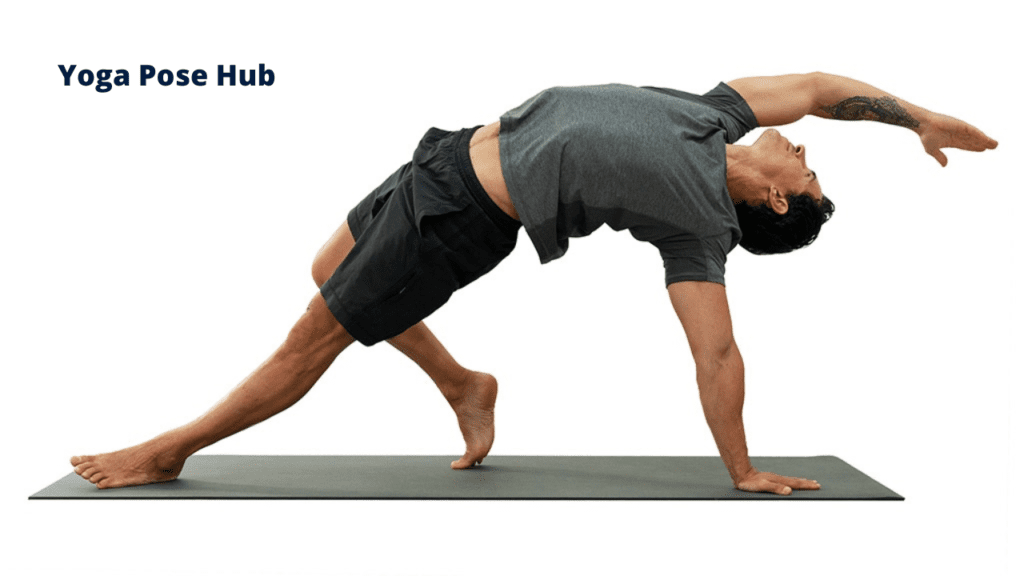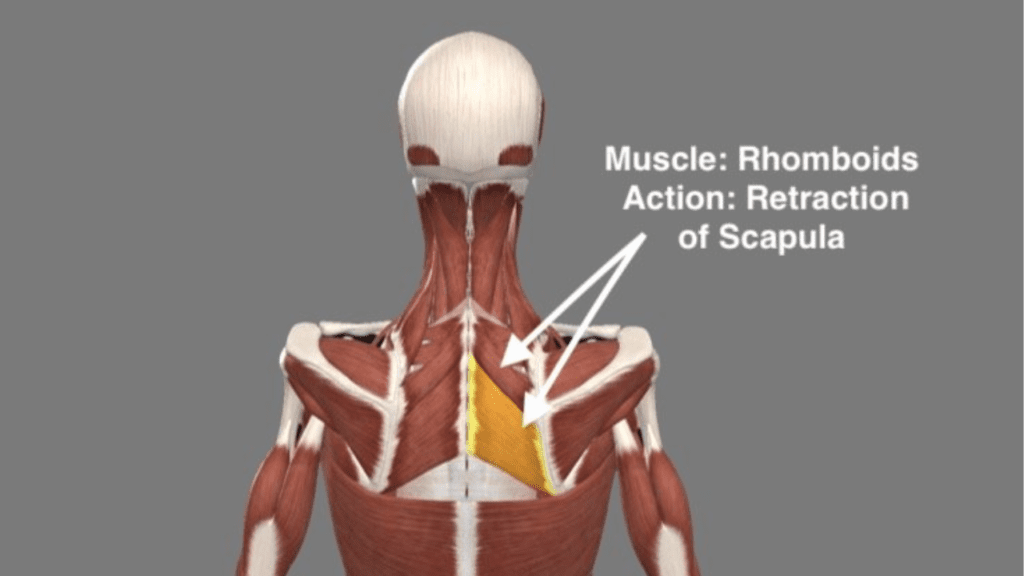Wild Thing Pose, called Camatkarasana in Sanskrit, is a heart-establishing yoga pose that brings freedom, pleasure, and lightness to your workout. It’s a lovely expression of strength, flexibility, and style, allowing you to embody the wild, untamed strength inside. Whether you’re a seasoned yogi or an amateur seeking to enlarge your exercise, Wild Thing Pose offers an exact way to discover your body’s abilities and connect deeply with your internal self. Ready to unleash your internal wild? Let’s dive into the magic of Wild Thing Pose!
Target: Arm and shoulder

What is Wild Thing Pose?
Wild Thing Pose is a dynamic backbend that combines factors of an issue plank and a backbend, developing an exciting and heart-organizing experience. This pose is regularly visible as a spontaneous expression of freedom and playfulness, reflecting its call—Wild Thing! In this pose, one hand and foot are grounded, while the opportunity leg and arm enlarge upward and outward, developing a beautiful arc in conjunction with your frame. This pose no longer first-rate opens up your chest and shoulders but additionally strengthens your middle, hands, and legs.
warm-up before yoga
A proper warm-up before yoga is essential to prepare your body and mind for practice. It helps increase blood flow to the muscles, making them more flexible and reducing the risk of injury. Warm-up exercises like gentle stretches, cat-cow movements, or sun salutations gradually increase your heart rate and prepare your joints for more intense poses. Taking a few minutes to warm up ensures that you have a safe and effective yoga session, setting a positive tone for the rest of your practice.
How to Prepare Pose
Before diving into Wild Thing Pose, it’s vital to warm up your frame to prevent harm and maximize the advantages of the pose. Here are some preparatory poses to get you started:
- Downward Facing Dog (Adho Mukha Svanasana): This pose stretches your shoulders, hamstrings, and calves, getting equipped your frame for the backbend in Wild Thing.
- Side Plank (Vasisthasana): A brilliant pose to assemble the arm and center strength had to resource Wild Thing Pose.
Step-by-Step Guide to Perform
Now that you’re warmed up, permit’s break down the way to appropriately input Wild Thing Pose:
- Begin in Downward Facing Dog: Start by grounding your arms and feet into the mat, lifting your hips high in the direction of the ceiling.
- Shift into Side Plank: Roll onto the outside fringe of your right foot, stacking your left foot on the pinnacle. Your body ought to be in a straight line from your head to your heels.
- Lift Your Left Arm: Reach your left arm up towards the sky, stacking it immediately over your shoulder.
- Flip Your Dog: Slowly carry your left leg, bending at the knee, and step it in the back of you. Your left foot ought to land flat on the ground together with your feet pointing far away from your frame.
- Open Your Heart: Arch your returned, lifting your chest in the direction of the sky. Allow your head to drop lower back lightly, retaining your proper arm robust and engaged.
- Hold and Breathe: Stay inside the pose for 5-10 breaths, playing the stretch and starting. When you’re equipped, cautiously go back to Side Plank, after which to Downward Facing Dog.
Curious about more yoga poses? Check out our detailed guide on “Rabbit Pose Yoga” for another enriching addition to your practice!
Benefits of Wild Pose
The advantages of Wild Thing Pose expand a long way beyond genuinely physical power and versatility. Here’s what makes this pose a favorite among yogis:
- Heart Opener: By lifting your chest and expanding your coronary heart area, Wild Thing Pose enables you to release pent-up feelings and open your coronary heart to like and pleasure.
- Strength Builder: This pose calls for large strength in your palms, shoulders, and center, assisting in toning and constructing these muscle corporations through the years.
- Improves Flexibility: Wild Thing Pose stretches your chest, shoulders, hip flexors, and quadriceps, enhancing everyday flexibility.
- Boosts Energy: The dynamic nature of this pose can help to invigorate your frame and thoughts, leaving you feeling energized and refreshed.
- Encourages Playfulness: The playful nature of Wild Thing Pose encourages you to permit cross inhibitions and encompass spontaneity, bringing enjoyment of lightness and a laugh to your workout.
Common Mistakes and How to Avoid Them
Like any yoga pose, Wild Thing comes with its challenges. Here are a few commonplace mistakes and tips to avoid them:
- Dumping Weight into the Shoulder: Ensure your helping arm is powerful and engaged, with the shoulder blade drawing down the lower back to keep away from straining the shoulder.
- Overarching the Lower Back: Focus on lifting through the chest as opposed to arching the decreased lower back excessively. This will shield your backbone and prevent pain.
- Losing Balance: Make certain your basis (ft and hand) is solid and sturdy. Engage your middle muscles to help maintain stability during the pose.
Curious about more yoga poses? Check out our detailed guide on “Crane Yoga Pose” for another enriching addition to your practice!
Modifications for Wild Pose
Wild Thing Pose may be intense, specifically if you’re new to yoga or have tight shoulders and hips. Here are some modifications to make the pose more accessible:
- Knee Down Side Plank: If a complete Side Plank is simply too difficult, keep your backside knee on the ground for added support.
- Use a Chair: Place your assisting hand on a chair instead of the ground to lessen the intensity and build strength progressively.
- Half Wild Thing: Instead of flipping your canine absolutely, practice lifting one leg and opening your chest from a downward-facing dog role. This helps build energy and flexibility before entering into the whole pose.
Variations of Wild Pose
Once you’re cushty with the fundamental version of Wild Thing Pose, you can attempt these versions to deepen your practice:
- One-Legged Wild Thing: From Wild Thing Pose, elevate the extended leg closer to the sky for an added mission and deeper stretch.
- Wild Thing with a Twist: Incorporate a twist through achieving the pinnacle arm beneath your body, threading it via the space among your supporting arm and leg.
- Advanced Wild Thing: For advanced practitioners, try lifting the lowest leg off the ground, balancing for your helping arm and one foot. This variant calls for huge strength and stability.
Why You Should Add Wild Pose to Your Routine
Adding Wild Thing Pose to your yoga ordinary can offer a range of benefits, from expanded electricity and versatility to a more feel of pleasure and freedom. Whether you’re trying to deepen your practice, assign yourself a new pose, or simply have some amusement for your mat, Wild Thing Pose is an exquisite addition to any yoga sequence. So why no longer supply it a try to see how it feels to unleash your internal wild?
Incorporating Wild Thing Pose into Your Yoga Practice
Wild Thing Pose can be an outstanding addition to any yoga collection, whether you’re practicing a dynamic Vinyasa waft or a slower, greater meditative session. Here are a few methods to incorporate Wild Thing into your practice:
- As a Transition: Use Wild Thing Pose as a transition between Side Plank and Downward Facing Dog to feature a dynamic element for your exercise.
- In a Backbending Sequence: Include Wild Thing Pose in a chain with different backbends like Camel Pose (Ustrasana) and Wheel Pose (Urdhva Dhanurasana) to deepen your coronary heart-establishing practice.
Curious about more yoga poses? Check out our detailed guide on “Rabbit Pose Yoga” for another enriching addition to your practice!
Breathing Techniques for Wild Thing Pose
Breath is a powerful tool in yoga, particularly in poses like Wild Thing in which stability and openness are key. Here are a few respiratory techniques to beautify your revel in Wild Thing Pose:
- Ujjayi Breath: This ocean-sounding breath facilitates calming the mind and keeps you focused, specifically when balancing in Wild Thing Pose.
- Deep Belly Breathing: Encourage a deep, full breath that expands your belly and chest, assisting in opening your coronary heart and deepening the backbend.
Target Points

Conclusion
- Wild Thing Pose is More Than a Stretch: It’s a beautiful heart-beginning pose that mixes electricity, flexibility, and playfulness.
- Perfect for All Levels: With adjustments and variations, anybody can exercise Wild Thing Pose, whether or not you are a beginner or a sophisticated yogi.
- Boosts Physical and Emotional Well-being: From constructing muscle strength to enhancing emotional release, this pose gives numerous blessings.
- Encourages Playfulness: Embracing the wild and pleased nature of this pose can bring a sense of fun and spontaneity to your exercise.
- Adds Variety to Your Routine: Incorporating Wild Thing Pose into your yoga practice can keep your sessions fresh and exciting.
Give Wild Thing Pose a try to enjoy the joy and freedom it brings to your body and thoughts! Are you ready to unleash your inner wild issue on the mat?
Question About Wild Thing Pose
What is Wild Thing Pose?
Wild Thing Pose, also known as Camatkarasana, is a yoga pose that opens the heart, stretches the chest, shoulders, and hip flexors, and strengthens the arms and legs.
Who can practice Wild Thing Pose?
Wild Thing Pose is suitable for all levels, with modifications available for beginners and variations for more advanced practitioners.
What are the benefits of Wild Thing Pose?
This pose helps improve flexibility, build upper body and core strength, enhance balance, and open the chest and shoulders for better posture and emotional release.
How can I modify Wild Thing Pose if I’m a beginner?
Beginners can modify Wild Thing Pose by keeping one hand on the ground or practicing a side plank instead of lifting into a full backbend.
Can Wild Thing Pose help with back pain?
Yes, when practiced correctly, Wild Thing Pose can help alleviate mild back pain by stretching the spine and strengthening the muscles around it. However, those with severe back pain should consult a healthcare professional before attempting it.